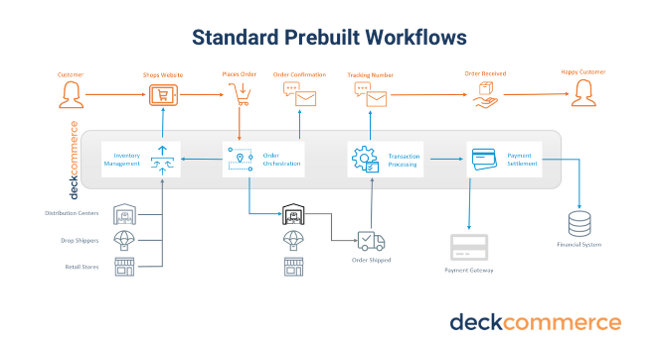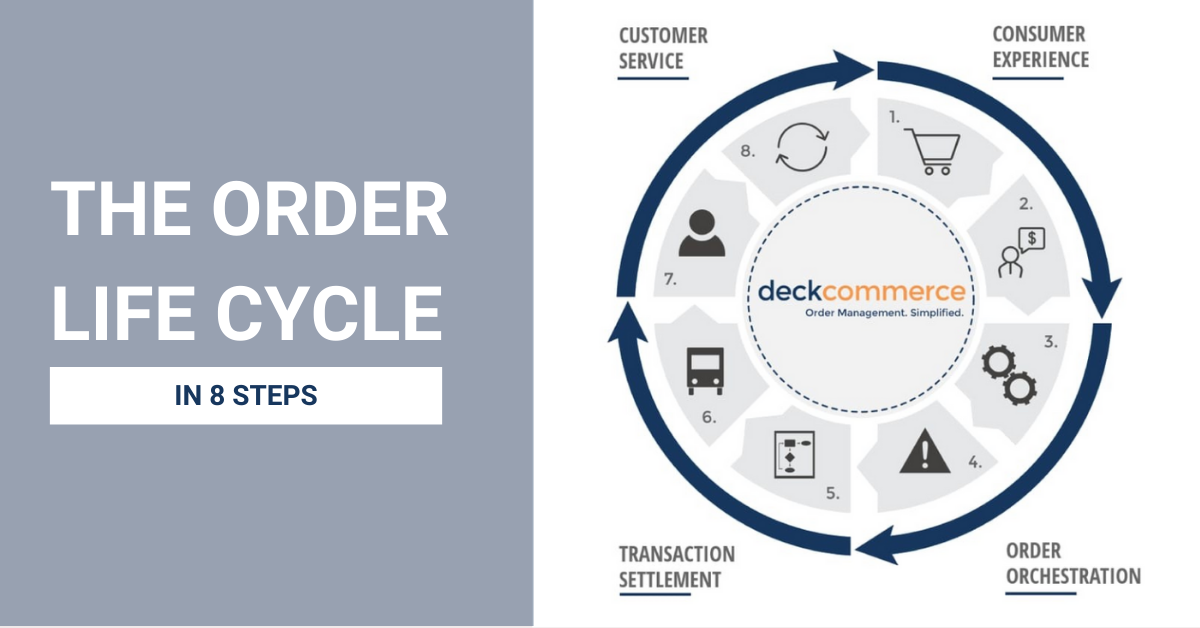
During seasons of economic crisis, consumers’ purse strings tighten a bit more than usual. High inflation and unstable job markets make it critical for retailers to retain their loyal customers. And consumers aren’t the only ones hit with cost cuts—retailers and branded manufacturers have to “do more with less”.
While it may seem counterintuitive to invest in new technology during tough economic seasons, the reality is that retailers can’t afford to have the wrong technology in their stack. Here are five reasons why having the right order management system is a good financial decision for retailers.
1. Sell more products
It’s simple math. The more inventory that’s exposed, the more products can be sold. But if inventory is siloed in different systems or all aggregated together in one large unusable number, then retailers risk losing sales. Shoppers should never see “out of stock” on your website when there’s still inventory to sell.
With an order management system, retailers have visibility into all available-to-sell inventory no matter where it’s located.
Multi-channel selling: Allocate inventory where needed whether it’s a marketplace, online store, dropshippers, or retail stores.
Omnichannel fulfillment: Highlight fulfillment options on the storefront to let shoppers select how they would like their order fulfilled – buy online pickup in store (BOPIS), curbside pickup, ship to store, or home delivery.
Preorders and backorders: Even when products are out of stock, an order management system can accept backorders and notify shoppers when the product is back in stock. Likewise, gain momentum for new product launches by accepting preorders.
2. Manage customer expectations at the time of the order
Informed customers are happy customers. According to a recent Forbes study, 48% of ecommerce customers abandon their cart for shipping reasons, including if there’s no estimated delivery date listed. When making a purchase online, buyers want to know when they can expect to receive their product.
An order management system can highlight estimated delivery dates right on the storefront as well as let them know if their item is available in their local store—giving buyers all the information they need to hit “buy now”.
An OMS also gives retailers the ability to communicate order status updates every step of the way. Are they picking their item up curbside? Communicate with them via SMS messages in addition to sending emails to provide an additional layer of convenience.
3. Say goodbye to manual processes
Just because something can be done via spreadsheets, doesn’t mean it should be. While on the surface, leveraging a tool like Excel to manage order data sounds like the cheaper option, but when you run the numbers, it’s actually hurting retailers.
For example, say it takes 15-20 minutes to manually process a return. An order management system can automate 98% of the return process—taking that 20 minutes down to 1 minute. If a retailer processes 100 returns a day, that’s 33 hours saved. Time that brands can invest back into serving their customers. But don’t just take my word for it:
“We saved over 7k hours of labor by automating our returns process. Now our team can focus on providing excellent shopping experiences to our customers.” - Children’s shoe company leveraging Deck Commerce
Additionally, smart order routing gives retailers the ability to ship products from the fulfillment location closest to their customers— whether that’s a warehouse or their local retail store— saving transportation costs and optimizing the final mile.
Here are some additional scenarios an OMS can automate, saving retailers time and money:
- Bulk cancellations
- Return loyalty points after receiving a returned item
- Simple order grading to ensure no suspicious orders are processed
- Customer communications – notifying when their item has been processed, shipped, return accepted, etc.
- Trigger payment capture
- And more.
True dedicated order management systems have standard prebuilt workflows based on industry best practices, so brands don’t have to start the process from scratch.

4. Optimize customer service teams
Eighty-six percent of buyers are willing to pay more for a better customer experience. And many times, an interaction with a customer service agent can make or break that experience. That’s why it’s imperative to give customer service teams the tools and information they need to serve their customers well.
Partial look up. When someone calls into customer service, they expect to get help, not be hounded for their complete 16-digit order number. Giving customer service teams the ability to look up orders with basic information (customer name, email, etc.) provides a more pleasant experience.
Automated communication. As mentioned earlier, an informed customer is a happy customer. Sending automated order status updates gives customers the information they need and keeps customer service agents free to speak with customers about unique circumstances.
Visibility into order status. If someone does call in asking for an order status, it’s important that customer service agents have that information at their fingertips. An order management system will easily show agents where an order is in the fulfillment process, so they can provide relevant information. Plus, they have access to line-item level detail in case a customer calls in and forgot to apply a coupon or wants to cancel only part of an order.
5. Get up and running fast
A big hurdle for retailers and new technology is the implementation timeline. Many retailers say, “we need to be focused on bringing in revenue and don’t have time to implement a new technology.”
But implementing an order management system doesn’t have to be a big technology project. At Deck Commerce, we can get retailers up and running in as little as a few weeks, especially if they already leverage any of our prebuilt integrations.
With an uncertain economy, one thing retailers can control is their efficiency. That’s why it’s critical to have the right order management system in your technology solution.
By letting your OMS focus on processing orders, your team can focus on creating amazing customer experiences.






.png?width=2000&height=2000&name=Blog%20Directory%20CTA%202000x2000%20px%20(2).png)






.png?width=2000&height=2000&name=Blog%20Directory%20CTA%202000x2000%20px%20(3).png)
